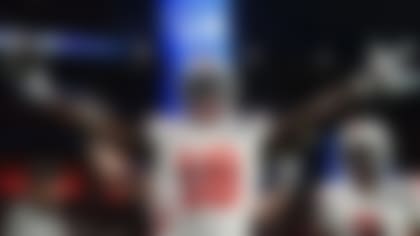Labeling prospects as "overrated" going into the draft often makes it seem as though it's the player's fault that his ability was overestimated. This is not what we're doing here.
However, there are a few players in this year's class that have received higher ratings than they should. And they will carry those too-high expectations into their pro careers if selected at the top of the draft.
Sometimes a good college player is ranked at the top of a weak position group -- a player who should be a mid-second-round pick can be pushed into the mid-to-late first round if a team wants to get the best of a shallow pool. Players' values are also overestimated when their potential for greatness is given too much weight vs. the inconsistency that player showed against better college competition.
The following draft prospects on offense are all likely to be longtime NFL players. But I believe they've been overrated during the evaluation process. For my list of overrated defensive prospects, click here.
Le'Raven Clark, OT, Texas Tech: Clark plays with a tenacity that every offensive line coach likes, and general managers took note of his 36-inch arms and 85-inch wingspan last month at the NFL Scouting Combine. But his lateral agility and recovery ability make him a risky pick on the edge, as NFL pass rushers will be more capable of stuttering or spinning past Clark on their way to the quarterback. He would be a solid second-round pick that can develop into a starting right tackle, but pushing him into the lower-third of the first round might set up expectations that will be difficult for him to attain.
Will Fuller, WR, Notre Dame: Fuller's speed is evident (4.32 40-yard dash at the combine), and he'll make any defense pay if it loses him in a zone or puts a lesser corner on his side. However, that won't happen very often in the NFL. He'll have to deal with real physicality on Sundays despite weighing 186 pounds. Fuller's drops have been much-discussed, and his 8 1/4-inch hand measurement at the combine didn't silence those concerns. If he gets into the right situation, where he's a complementary piece and not the primary option, then Fuller can succeed. Being ranked in the top 20-25 players in this class, however, is not commensurate with that role.
Jason Spriggs, OT, Indiana: Everyone saw Spriggs' athleticism at the combine. As a Hoosier, he showed, on occasion, the ability to become a legitimate starting left tackle on Sundays. The potential certainly is there, but his inconsistent anchor and ability to handle better pass-rush moves means he'll need to take to coaching to become more than a serviceable NFL starter.
Ronnie Stanley, OT, Notre Dame: Stanley certainly possesses the athleticism and size to be a starting tackle in the NFL for years, and possibly a very good one. But comparisons to Hall of Famer Walter Jones and others are patently unfair. Sure, Stanley could end up a top-six pick like Jones. He has great length (35 5/8-inch arms, 84 1/4-inch wingspan) and flashed brilliance on the edge for the Irish. Remember that Eugene Monroe and D'Brickashaw Ferguson were similarly ranked coming out of college, and I'd expect Stanley to have a career somewhere between those two veterans.
Follow Chad Reuter on Twitter _@chadreuter_.












